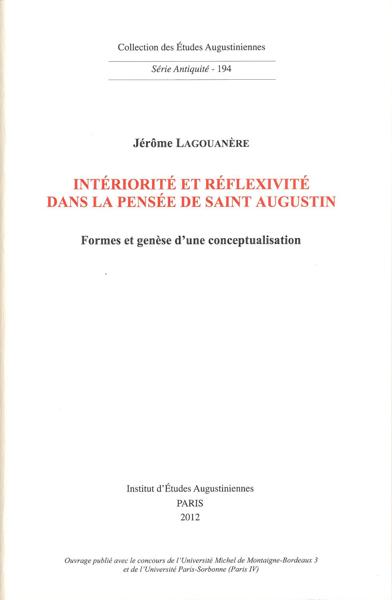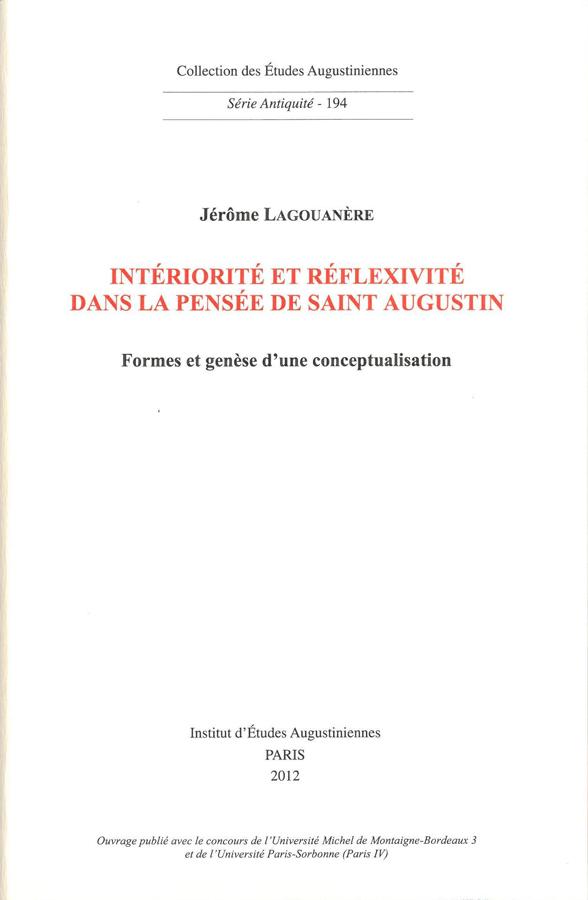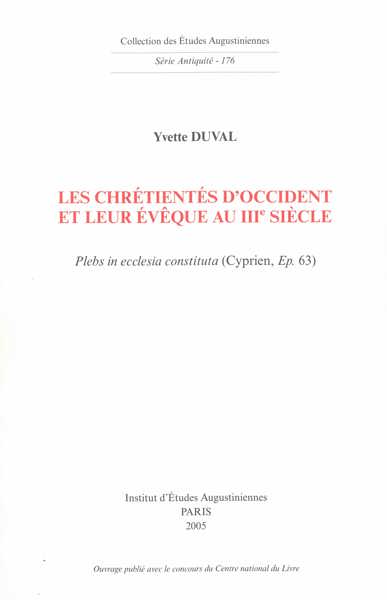
Intériorité et réflexivité dans la pensée de saint Augustin
Formes et genèse d’une conceptualisation
J. Lagouanere
- Pages: 694 p.
- Size:165 x 250 mm
- Language(s):French
- Publication Year:2013
- € 42,99 EXCL. VAT RETAIL PRICE
- ISBN: 978-2-85121-251-1
- Paperback
- Available
"L. hat somit mit dieser Studie eine faszinierende neue Interpretation von Augustins Seelenlehre vorgelegt, die nicht nur für Augustinforscher im engeren Sinn von Interesse sein dürfte, sondern für alle, die sich im weiteren Sinn für theologische Erkenntnislehre, "philosophische Theologie" und Fundamentaltheologie interessieren." (Josef Lössl, in: Theologische Literaturzeitung, 140.9, 2015, p. 941-943)
This work is in keeping with a process of a conceptual archeology. It aims at studying how the notion of interiority arises and develops in Augustine’s thought, from his first books, the Dialogues written in Cassiciacum, to his main work, the De Trinitate. The first part examines the main principles of the syntax of interiority throughout a topological process. It begins by studying, through a syntagmatic approach, the relations that link crucial terms such as anima, animus, mens, ratio, intellectus, intelligentia, memoria, uoluntas, and spiritus; next, it examines paradigmatically this syntax of interiority through the motif of spiritual progress. Finally, the notion of interiority appears as a dynamic structure where the concept of imago Dei plays a central role. This leads to the second part of the work which examines the anthropo-theology of the image in Augustine’s thought. After having situated the concepts of imago and similitudo in the context of Antique thought, the author studies their use at the heart of the De Trinitate, which leads to a reflexion on the status of analogy and its thematization through the Pauline motif of the mirror (1 Co 13, 12). Closely examining the the notion of interiority through the motif of the mirror leads, in turn, to further reflection on the concept of reflexivity understood not only as noetic, but also as semiotic and hermeneutic.
L’ouvrage s’inscrit dans une démarche d’archéologie conceptuelle. Il s’agit de retracer la genèse de la notion d’intériorité et les formes prises par cette conceptualisation dans la pensée d’Augustin d’Hippone, des premiers écrits, les Dialogues de Cassiciacum, jusqu’à l’œuvre centrale que constitue le De Trinitate. La première partie s’attache à dégager les grands principes de la syntaxe de l’intériorité dans le cadre d’une démarche topologique. Le travail s’organise selon un axe syntagmatique où sont étudiées les relations qui unissent des termes aussi essentiels qu’anima, animus, mens, ratio, intellectus, intelligentia, memoria, uoluntas et spiritus, et selon un axe paradigmatique, à travers le motif de l’ascension spirituelle. En dernier ressort, l’intériorité apparaît comme une structure dynamique où le concept d’imago Dei joue un rôle central. Cela conduit à la seconde partie où est examinée l’anthropo-théologie de l’image dans la pensée augustinienne. Après avoir replacé les concepts d’imago et de similitudo dans le cadre de la pensée antique, l’auteur étudie leur utilisation au sein du De Trinitate, ce qui l’amène à une réflexion sur le statut de l’analogie et sa thématisation à travers le motif paulinien du miroir en énigme, en 1 Co 13, 12. Cette réflexion sur l’approche spéculaire de la notion d’intériorité chez Augustin conduit à une interrogation sur son lien avec la réflexivité, conçu non seulement comme concept noétique, mais aussi sémiotique et herméneutique.




